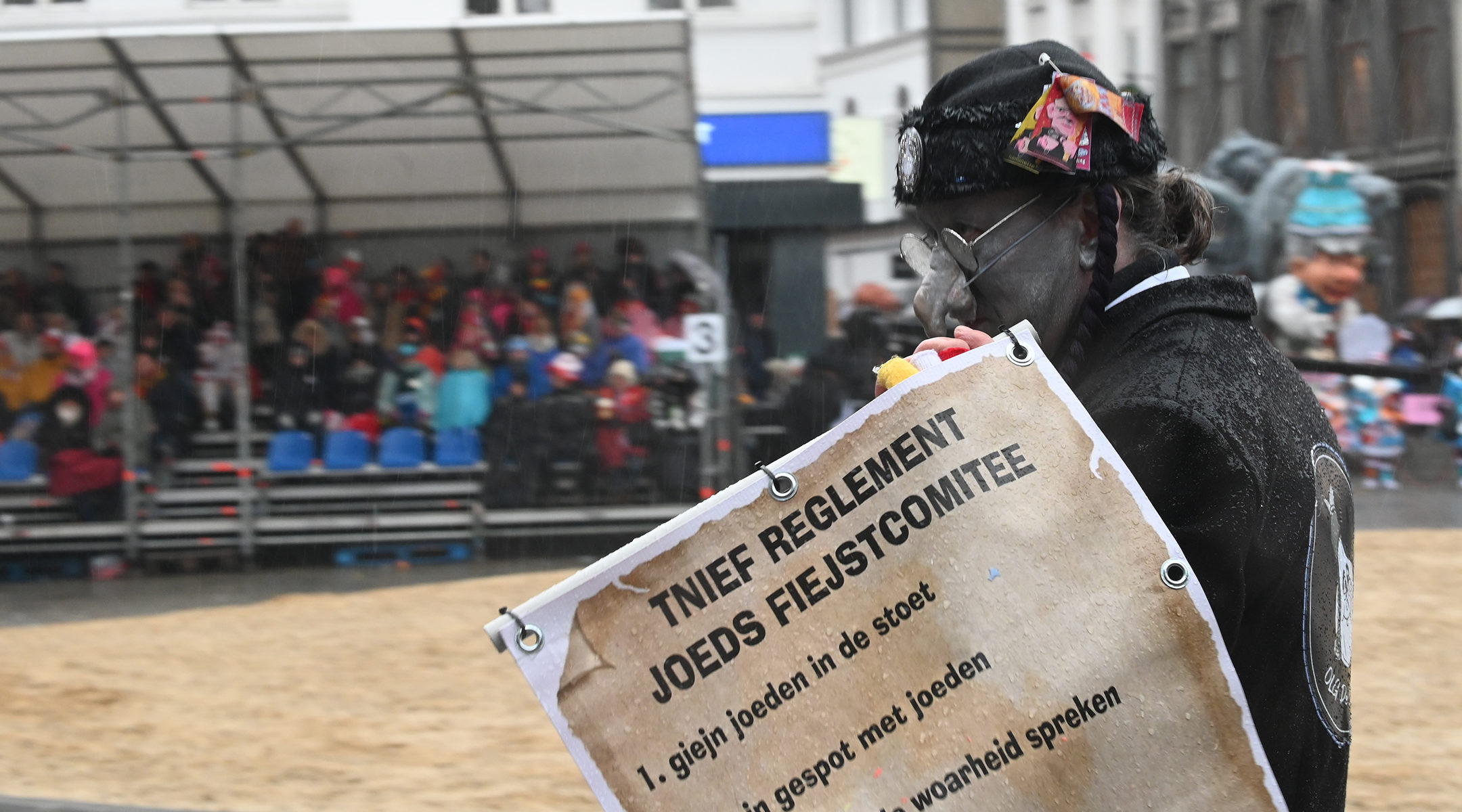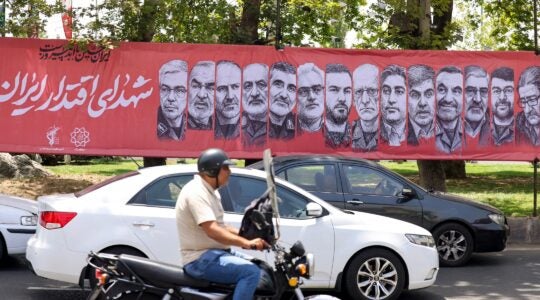(JTA) — Over the past two years, at least five parades featuring offensive depictions of Jews have taken place in EU member countries.
The first happened in the Belgian city of Aalst, whose renowned carnival in 2019 featured effigies of grinning Jews holding bags of money. One of the figures had a rat on its shoulder.
UNESCO called the display anti-Semitic and scrapped the Aalst Carnival, an event with thousands of participants and about 100,000 spectators, from its list of world heritage events.
This year’s parade on Feb. 23 went even further, resembling a scene from the satirical film “Borat” in the process: Revelers wore fake hooked noses and suits that compared haredi Orthodox Jews to insects.
On the same day, two municipalities in Spain held parades where dozens of performers juxtaposed Jews and Nazis with floats evoking death camps and trains. The one in Badajos, some 200 miles west of Madrid, had participants wearing uniforms that were part SS and part concentration camp prisoner while holding up signs reading “the same.”
Last April, Polish villagers at an Easter procession beat and burned the effigy of a haredi, or ultra-Orthodox, Jew.
Each of these events provoked passionate condemnations, including by critics who viewed them as evidence of an emerging trend. The Simon Wiesenthal Center in a Feb. 26 statement called the displays “a reflection of the growing levels of anti-Semitism becoming evident in all corners of Europe.”
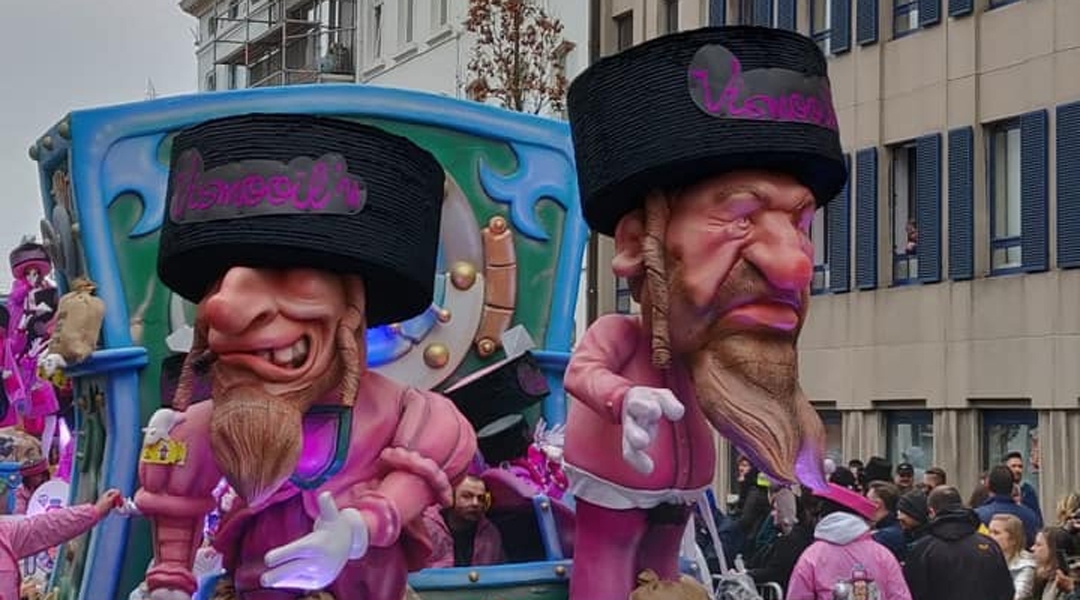
A parade float at the Aalst Carnaval in Belgium features caricatures of Orthodox Jews atop money bags, March 3, 2019. (Courtesy of FJO)
Yet to historians familiar with the anti-Semitic record of Europe’s carnivals, the emergence of this theme in modern-day processions is an organic continuation of a centuries-old tradition of anti-Semitism at these events — particularly the religious Carnival that celebrates Lent, the 40-day period that precedes Easter.
An expression of joy over spring’s arrival, it featured costumes, masks and comedy from its onset. But in Middle Ages Venice and Rome, whose carnivals were the world’s largest, comedy meant mocking Jews.
“This imagery is not an expression of something new. It is the manifestation of an element that has almost always been an element of carnival, and never really left,” said Bart Wallet, an author and University of Amsterdam historian who studies European Jewry.
The anti-Semitic carnivals of old
In Rome specifically, the Catholic Church under Pope Paul II revived a custom in 1466 in which Jews were forced to race naked through the streets.
“Before they were made to run, the Jews were richly fed, so as to make the race more difficult for them and at the same time more amusing for spectators,” a witness wrote about the event, according to David Kertzer’s 2001 book “The Popes Against the Jews: The Vatican’s Role in the Rise of Modern Anti-Semitism.”
Jews ran “amid Rome’s taunting shrieks and peals of laughter, while the Holy Father stood upon a richly ornamented balcony and laughed heartily,” the witness wrote.
Historians don’t have a great wealth of records from medieval carnivals, according to historian David Nirenberg, the dean of the divinity school at the University of Chicago.
“But the material we have suggests that it was very central,” he said.
At those events and other medieval religious dramas, Jews were almost always portrayed negatively, as “something to be overcome,” he added. In some plays, the Jews were chased away together with the city prostitutes.
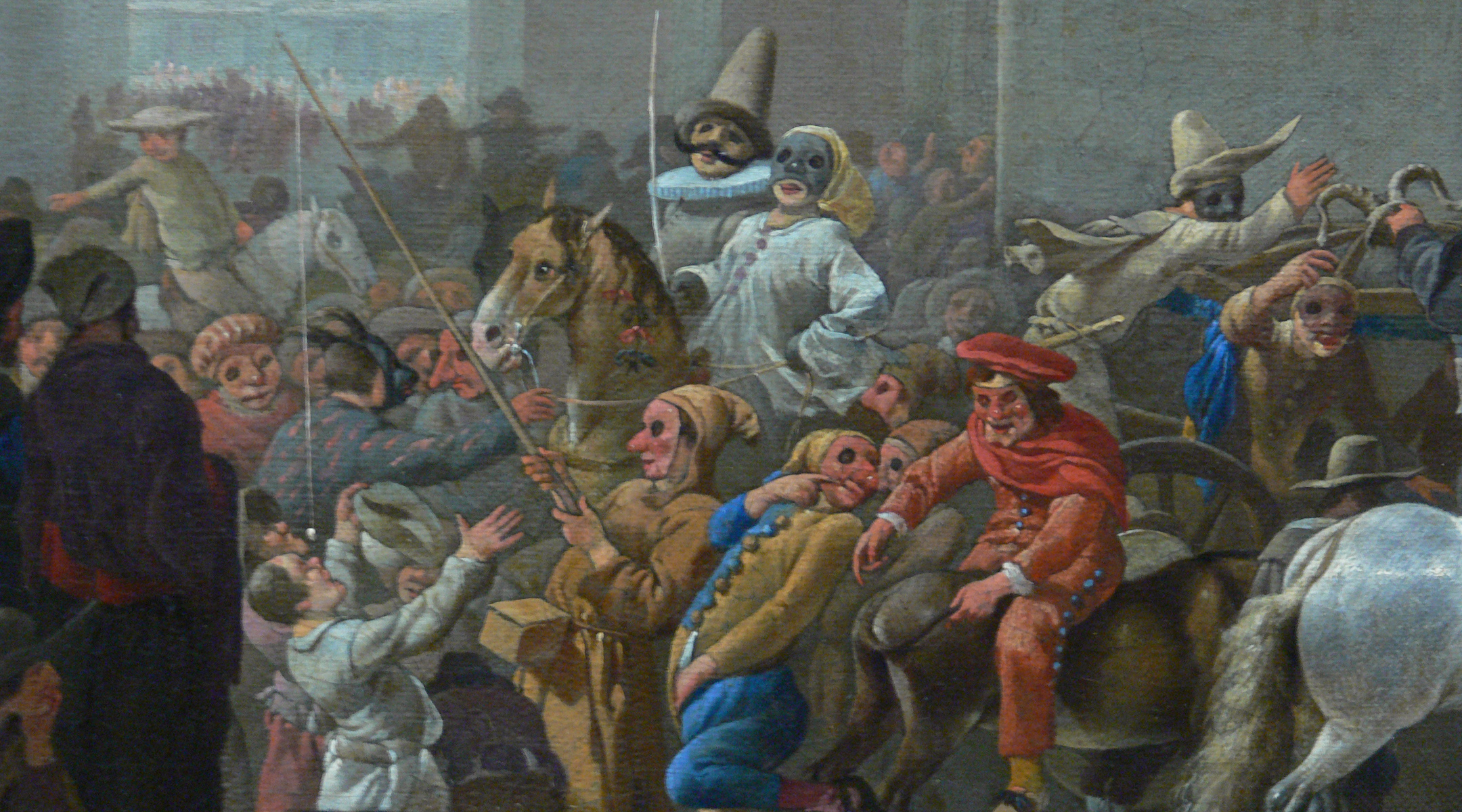
This painting depicting a carnival in Rome, circa 1650, is in the collection of the Art History Museum in Vienna. (Fine Art Images/Heritage Images/Getty Images)
Throughout the 18th and 19th centuries, rabbis of the ghetto in Rome were forced to march through the city streets wearing clownish outfits, jeered and pelted by the crowd. After the Inquisition was abolished in 1834, the Jewish community of Rome petitioned the Vatican to end the custom. In 1836, Pope Gregory XVI replied.
“It is not opportune to make any innovation,” he said.
The custom was abolished in the 19th century, but Jews were still made to pay for Carnival through a special tax.
In the larger Venice Carnival, participants wore “Jew” masks, complete with hooked noses and grotesque expressions, according to James Johnson, author of the 2011 book “Venice Incognito: Masks in the Serene Republic.”
This sort of imagery has survived to this day in Elche, where actors each year put on what Nirenberg says is the oldest continuously performed drama in Europe, “The Elche Mystery.” Portraying rowdy Jews, the actors gather around a church where the Virgin Mary is being prepared for burial. They fight against apostles of Christianity until they are vanquished and agree to convert.
Transition to today
Starting in the 19th century, carnivals gradually became secular events. But the vilification and mockery of Jews persisted, according to the historian Wallet.
The only interruption in this tradition came in the three decades that followed the Holocaust, “where perhaps there was a measure of self-censorship.”
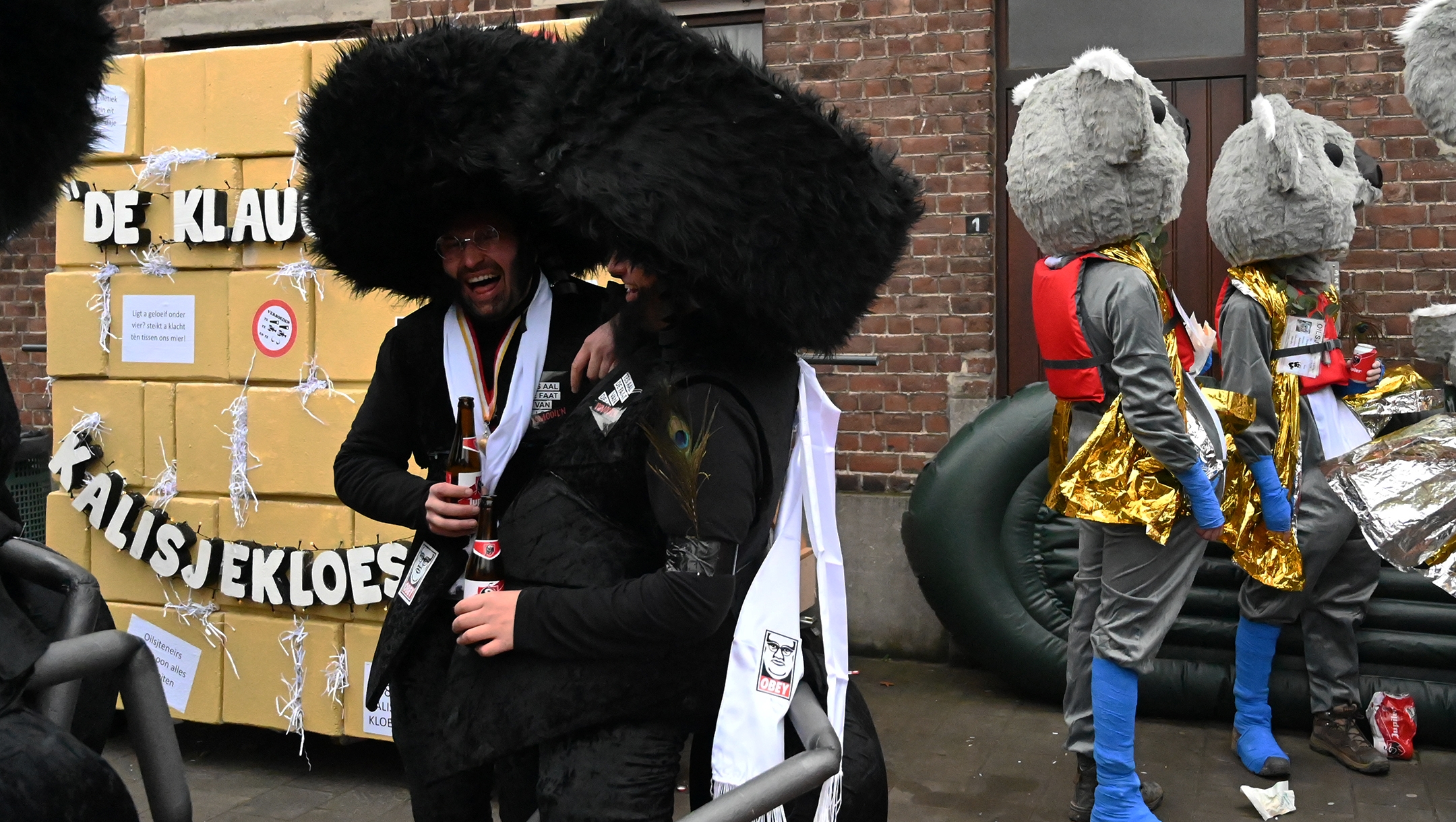
Men are dressed as haredi Orthodox Jews with an ant’s abdomen and legs at the annual procession of the carnival in Aalst, Belgium, Feb. 23, 2020. (Cnaan Liphshiz)
“But now we’re seeing carnivals returning to those origins,” Wallet said.
Emile Schrijver, director of the Jewish Historical Museum and Jewish Cultural Quarter of Amsterdam, also believes that the modern carnivals are “playing on some ancient anti-Semitic themes.”
That was certainly the impression of many critics of the Aalst float featuring grinning Jews with bags of money.
At Aalst this year, there was also text alluding to stereotypes of Jews. One of the groups that wore fake hooked noses and haredi costumes had a sign on their float labeled “regulations for the Jewish party committee,” and it included “Do not mock Jews” and “Certainly do not tell the truth about the Jew.”
At both of the Aalst festivals, organizers denied that the depictions of Jews were anti-Semitic, attributing them to the no-holds-barred atmosphere of satire and ridicule characteristic of the event.
The Spanish carnivals did not include this kind of ridicule of Jews, but their treatment of the murder of Jews in the Holocaust was less than reverent, with participants danced as Nazis and Jews dancing together to the sounds of a train picking up speed.
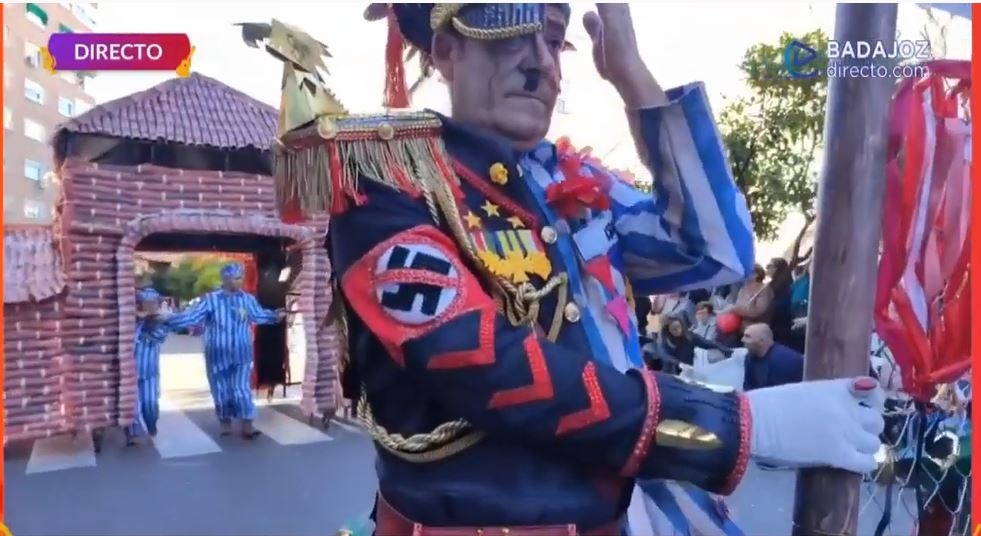
Some participants of the carnival in Badajos, Spain, wore Hitler mustaches and uniforms that were part SS and part concentration camp prisoner, Feb. 23, 2020. (Extremadura Canal)
Organizers of those events apologized for displaying insensitivity while dismissing any allegations of anti-Semitism. Advocates of Holocaust floats of both Spanish carnivals this year also defended them as an attempt to commemorate the victims.
Spain, Belgium and Poland occupied three of the top spots in an index of European anti-Semitism compiled by Anti-Defamation League in 2019.
Schrijver, the museum director, pointed out that the Spanish events occurred in the context of the 75th anniversary of the defeat of Nazi Germany, as well as the competitive nature common in the contemporary carnivals.
“The people who compete in carnivals are always looking for a timely statement,” he said. “And they’re competing against one another on who makes the most shocking float. It’s not appropriate they choose the Holocaust, but it’s not surprising.”
JTA has documented Jewish history in real-time for over a century. Keep our journalism strong by joining us in supporting independent, award-winning reporting.
